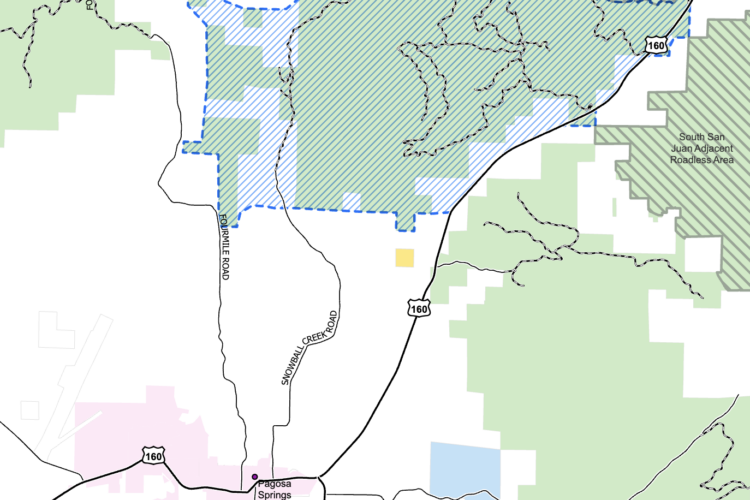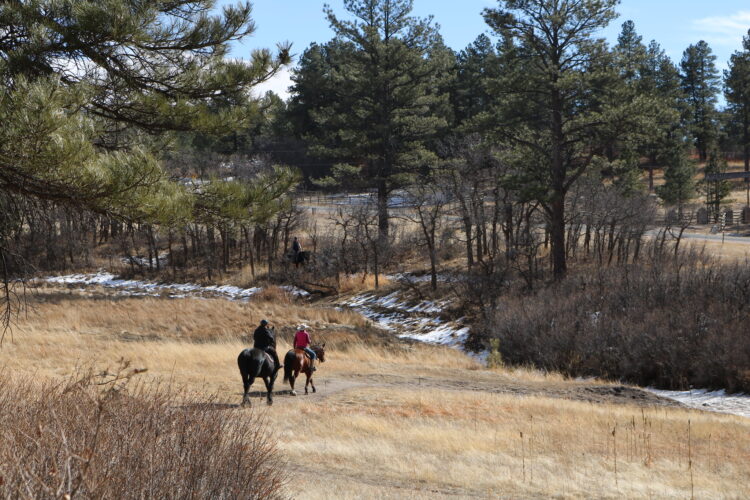
As an IMBA Silver-Level Ride Center, Tucson, Arizona has a lot to offer mountain bikers. There are trails surrounding the city in nearly every direction, ranging from green beginner trails to technical, rocky expert trails winding down Mount Lemmon. While most mountain bikers who are familiar with Tucson and its bounty know of the mountain’s big descents, the town’s premiere mountain bike organization is ready for the Coronado National Forest’s (CNF) new trails plan and the enhanced connectivity and access it could bring across Mt. Lemmon.
The need for a new plan
Duncan Caldwell, the president of the Tucson Off-Road Cyclists and Activists (TORCA) believes the new trails plan couldn’t have come sooner. He’s watched mountain biking grow in the region and the trailheads fill up. Along with a greater incidence of wildfires and trail user conflicts, the group is ready for change.
“We already saw a need even a decade ago,” he said. “Mountain biking was the only sport consistently growing numbers-wise.”
There are infamous rides across Mt. Lemmon, like the Lemmon Drop route, Bug Springs, Aspen Draw and a big handful of others, but they are largely old, “legacy” trails as Caldwell calls it, with sustainability and erosion issues. The new trails plan is needed, they say, to bring Mt. Lemmon trail riding into the modern era and improve connectivity and accessibility. Most of the trails within the Lemmon network veer toward advanced riding and most don’t meet modern trail design standards.
There are two mountain bike advocacy organizations in Tucson. TORCA focuses on the Mt. Lemmon area and the Sonoran Desert Mountain Bicyclists focus on the rest of the Tucson area trails.
Last year the CNF surveyed forest users and gathered public opinion on the new trails plan to help inform the project. The district recorded over 3,000 comments from a range of user groups, including mountain bikers, hikers, and others.
Adam Milnor, the CNF’s Recreation, Heritage and Lands Staff Officer said “in some ways the plan is a long time coming.” They get hundreds of thousands of users each year, however the forest has never had a comprehensive plan to date.
He acknowledged the growing popularity of the sport with the evolution of mountain bike technology and the need for new bike trails, while balancing the needs of other user groups and the environment.
“So that means things like directional, use-optimized trails in some cases. That means better connectivity in a lot of situations.”
The CNF said their top issues were a lack of legal, permanent public access in some areas, an overbalance of difficult trails, limited connectivity, and a desire for more mountain bike trails, since much of the accessibility for riders is hampered by wilderness-designated areas. Only 20% of trails within the system are suitable for mountain biking, according to the CNF, concentrating usage to fewer trails.
Caldwell also argues that new trails would offer better access to mitigate and battle wildfires on the mountain when they happen. Mt. Lemmon has suffered from a handful of wildfires in recent years, including the Aspen Fire in 2003, the Burro Fire in 2017, and the Bighorn Fire in 2020. The CNF says the Bighorn Fire impacted over two-thirds of the trail system and led to more erosion.

What the new plan brings
According to the Santa Catalina Trail Plan, the forest will achieve a 10% overall system growth and that includes the decommissioning of several system trails that have proven difficult to maintain or don’t see enough use.
Mountain bikers will gain about 30 miles with the new plan and though most of the new trails will be multi-use for bikers and hikers, there are two mentioned now which will likely be directional and bike-optimized–also requested by other user groups.
Bug Junior will be a 6-mile directional bike trail and the Fireline trail will be about 1.4 miles in length. Bug Junior will be a black-rated trail, but “within reach of riders of upper intermediate skill level” with rollable features. In total, there will be 35 miles of new trails. The CNF will adopt 20 miles, they’ll remove about 31 miles, and reroute almost 7 miles of trail. The CNF will adopt the 50-Year Trail and the Milagrosa trail.
The new Vista trail will be about 8.5 miles long and will serve as a green-rated multi-use trail allowing visitors to access several other trails.
The CNF also wants to create a new odd and even day bike and hike travel plan for trail users on the Aspen Draw trail, a favorite for mountain bikers who like steep and technical descents. The trail is one of the most cited for user conflict since it’s frequented by hikers too.
These are just a few examples which hold potential for a larger impact on the mountain bike community but there are dozens of projects in the ambitious 95-page document.
Milnor explained the tricky balance of decommissioning older trails, rather than maintaining them and constructing new trails.
“We had to make some tough choices, and everything requires tradeoffs,” said Milnor. “We had to acknowledge that it has been a struggle to maintain the system we have. Wildfires, erosion and increased use don’t help that equation. So our intent was to be truthful with partners and say ‘we can add some trails, but we also have to let some go.'”
The CNF looks at trails that could be potentially removed to see if they might be better off without them. According to Milnor, these trails are remote, have lower use, and could be badly damaged by fire, like the Cañada del Oro trail. New trails have the potential to be more easily maintained and easier to access.
“Letting those [trails] go back to nature frees up our capacity to develop trails that better connect our system and are closer to where people recreate.”

Maintaining trails is just the first challenge for TORCA
In its plan, the CNF notes the U.S. Forest Service (USFS) has had a hard time adequately maintaining its trails, especially remote backcountry trails, some of which are simply disappearing.
Caldwell explained the challenges of maintaining the rocky, unforgiving terrain of the Santa Catalinas. He worked with mountain bike organizations in Oklahoma and Indiana and he says the earth in Arizona has proved much harder to move.
“I don’t think our user group really understands how brutal it is up there as far as trail building goes,” he said. “It’s either hard rock or crumbly, decomposed granite. And there’s really no in between. You’re gonna be up there with jackhammers. The cost-per-mile is going to be whatever the maximum rate is, I can guarantee it.”
Not only does the lay of the current trail system make it difficult to access for trail users, it’s often more complicated for TORCA volunteers to access trails in need of maintenance. Some trails require traveling several miles with thousands of feet of elevation gain in order to complete work.
Through TORCA membership dollars, they bought a lifted Toyota Tacoma and a six-person Polaris side-by-side to crawl up some of the mountain’s rugged 4WD service roads. The trail crew rolled the Polaris once on a volunteer day. Prior to both vehicles, volunteers occasionally piloted their own up the mountain.
Another challenge TORCA faces on Mt. Lemmon isn’t because of what’s on the ground, but the creatures roosting above it. The group can’t work on much of the mountain during the Mexican Spotted Owl’s breeding season from the beginning of March through the end of August. The owl is a threatened species in both the U.S. and Mexico and a species of concern in Arizona, so rules in place limit work activity since the owl can be more susceptible to predation if it leaves its nesting area.
Lastly, Caldwell says they’ve faced several challenges working with the CNF over the years because of shifting forest leaders and the lengthy fire season often puts other agency priorities on hold, meaning an even longer wait for decisions that affect mountain bike trails.
The next steps
With the Santa Catalina plan hot off the presses, Caldwell isn’t positive how they’ll implement their process in the trails plan yet, but he’s optimistic they’ll be able to get started soon. Thus far, they’ve been mapping the new trails and thinking about the design, but there is a lot left to discuss.
Milnor with the CNF said as of now the plan is conceptual and they still need to conduct environmental assessments, review the Endangered Species Act and conduct cultural resource surveys. The CNF has told its partners like TORCA they hope they can start work as soon as January 1, 2024.
TORCA will have quite a few grant options to pursue from the USFS and from the National Forest Foundation. As the head of TORCA, Caldwell likely always wants to deliver Tucson riders as much as possible, but he’s also excited they finally have a new plan to work with.
“It’s been a long time coming for us, as far as the organization goes and the mountain bike community,” he said. “I wish we could have gotten more out of it, but you look at the greater whole and if money were no object it would be different. But you know how that goes.”



















